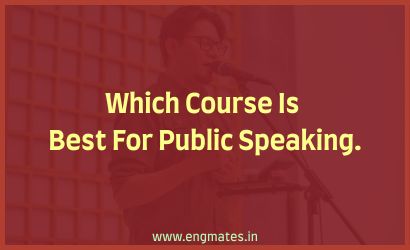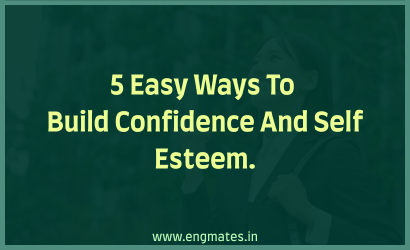Table of Contents
- Introduction
- The YouTube Illusion: Can Videos Replace Teachers?
- EngMates vs YouTube: Which Suits Your Learning Style?
- Difference Between YouTube Learning and Classroom Learning
- The Benefits of Guided English Practice with Experts
- Why Fluency Needs Real Interaction, Not Just Observation
- Developing Confidence in English Communication Through Practice
- Can YouTube Videos Offer Personalised Feedback?
- Overcoming Stage Fright: A Classroom Advantage
- From Grammar to Confidence: The Role of Structured Learning
- How English Speaking Institutes Build Real Conversation Habits
- Motivation vs Discipline: The YouTube Trap
- The 5 Signs You Need a Coach, Not Just Content
- Why EngMates is More Than Just an English Institute
- Conclusion
- Faqs
Introduction
In the age of smartphones and free tutorials, many wonder: Do you need an English speaking institute if you watch YouTube videos? At EngMates, An English speaking course in Tilak Nagar, learners receive guided practice, real-time correction and interactive learning, which turn passive watching into genuine fluency.
Do You Need Any English Speaking Institute If You Watch YouTube Videos? This blog explores that question with insights into guided learning, interaction and classroom support. If you’re stuck in a loop of endless videos and zero fluency, it’s time to explore what real-world English education can do differently.
The YouTube Illusion: Can Videos Replace Teachers?
YouTube teaches techniques but lacks human connection. A screen can’t correct mistakes, catch hesitation or guide tone. If you seek real feedback, live correction, structured practice and confidence through interaction, a classroom setting is essential. That’s where true fluency and developing confidence in English communication take shape.
- Passive Viewing Isn’t Learning: Watching videos may feel educational, but it’s still passive. Without practice, your brain consumes without applying. The difference between YouTube learning and classroom learning lies in action not observation.
- No Accountability: A YouTube video won’t check on your progress. Institutes like EngMates track it weekly, offering the benefits of guided English practice.
- Limited Real Engagement: You can’t ask a YouTube tutor to listen to your speech. Why fluency needs real interaction is because interaction triggers language memory and confidence.
- Over-reliance on Hacks: Shortcuts look appealing but create shaky foundations. Developing confidence in learning English communication requires consistency not quick fixes.
- Feedback is Non-Existent: Algorithms can’t mentor. An institute offers feedback you need when you speak wrong, hesitate or overthink.
EngMates vs YouTube: Which Suits Your Learning Style?
Do You Need an English Speaking Institute If You Watch YouTube Videos? It depends on how you learn. YouTube suits passive viewers, but real fluency needs interaction, correction and guided response. EngMates is built for active learners who want to practice, receive feedback and grow through real conversations.
- Visual Learners Still Need Interaction: Even if you understand better through visuals, why fluency needs real interaction still applies. You must speak, stumble and improve.
- YouTube Offers Information, EngMates Offers Transformation:: The difference between YouTube and classroom learning is growth. Institutes push students into real communication.
- Structured Progress Matters: The benefits of guided English Learning include assessment and advancement, something a video can’t monitor.
- Confidence Isn’t a DIY Project: Developing confidence in English fluency means speaking in front of peers and mentors regularly.
- Support System = Real Results: EngMates offers hand-holding, encouragement and strategic push, a big difference from solo YouTube bingeing.
Difference Between YouTube Learning and Classroom Learning
This table draws a clear line between passive learning and active mastery. While YouTube offers tips, the Best English speaking course in Delhi like EngMates delivers real interaction, timely feedback and practical growth. That structured experience is what transforms understanding into fluency, making the answer clear and undeniable.
One Size Doesn’t Fit All. The difference between YouTube learning and classroom learning is visible in how personalized your experience is. Real Classrooms Build Real Skills. The benefits of English practice like speaking drills, live debates and Q&A rounds can’t happen on YouTube. Only Real Voices Build Real Confidence.
YouTube vs Classroom Learning
| Criteria | YouTube Learning | Classroom Learning (EngMates) |
| Interaction | One-way, no feedback | Two-way, peer and trainer engagement |
| Practice Environment | None | Regular real-life conversation tasks |
| Accountability | Self-driven | Weekly reviews and checkpoints |
| Motivation | Fluctuating | Trainer support & group momentum |
| Correction Mechanism | Absent | Immediate feedback and correction |
The Benefits of Guided English Practice with Experts
Guided English sessions are structured, evaluated and responsive. EngMates tailors each lesson to your level, goals and pace. If you want real-time feedback, evolving support and personal attention that a screen simply can’t provide, it’s time to move beyond videos and step into live, result-driven learning.
- Tailored Exercises: One of the biggest benefits of guided English practice is customization to suit your speaking gaps.
- Immediate Clarification: Trainers explain doubts in real-time a key difference between YouTube and classroom learning.
- Weekly Progress Checks: Institutes like EngMates track your fluency curve, adjusting activities accordingly.
- Environment of Accountability: Regular performance reviews keep you grounded and consistent.
- You Learn What You Need: Instead of random suggestions, classroom mentors focus on what developing confidence in English learning and communication actually requires.
Why Fluency Needs Real Interaction, Not Just Observation
Do You Need an English Speaking Institute If You Watch YouTube Videos? YouTube may teach rules, but fluency comes from practice, pressure and real interaction. Speaking confidently requires stumbling, feedback and correction. Without these, growth stays limited. Real fluency demands more than theory; it needs experience, mistakes and guidance.
Fluency isn’t memorized, it’s built through spontaneous interaction. The difference between YouTube and classroom learning lies in real-time dialogue, unpredictability and feedback. Developing confidence in learning English communication requires pressure situations, peer engagement and correction. That’s why fluency needs real interaction, making guided English practice truly effective.
Developing Confidence in English Communication Through Practice
Confidence doesn’t come from watching, it comes from doing. Real confidence develops when you speak out loud, get feedback and face your fears. That’s why a classroom matters. It puts you in the spotlight, pushes you beyond comfort and creates the space where real growth and fluency begin.
From stage fear to speech, EngMates students build confidence in English communication through mock interviews, debates and storytelling. Real feedback fuels growth, while group energy and structured challenges create safe spaces to fail and improve. These are key benefits of English practice and why fluency needs real interaction.
Can YouTube Videos Offer Personalised Feedback?
No matter how helpful a video seems, it can’t adapt to your pace, confusion or hesitation. Do You Need an English Speaking Institute If You Watch YouTube Videos? Yes because a public speaking course in Delhi like EngMates gives live feedback, confidence and correction that videos simply can’t.
- Videos Aren’t Tutors: YouTube can’t say, “Repeat that again, but slower.” That’s the difference between YouTube and classroom learning: there’s no human cue, no adaptation.
- Mistakes Go Unnoticed: Errors made in isolation become habits. One of the key benefits of guided English practice is catching and correcting those errors before they cement.
- Trainers Know What You Don’t: You often won’t recognize your own weak spots, grammar slips, word misuse or pronunciation errors without a trained ear pointing them out.
- Self-Assessment is Limited: It takes more than effort to speak well; it takes feedback. An expert helps refine your tone, pace, intonation and word choices beyond what you can self-diagnose.
Overcoming Stage Fright: A Classroom Advantage
Stage fright doesn’t disappear by watching others; it fades when you face it yourself. If building confidence is your goal, YouTube falls short. It can’t recreate performance pressure, but a live class does. That challenge is what helps you truly speak, improve and grow into a confident communicator.
Developing confidence in English Fluenvy comes from repeated exposure. Guided English practice reduces fear by desensitizing you to speaking in public. Trainers offer instant feedback and calming strategies. Group activities break social barriers and regular speaking turns anxiety into normalcy. Repetition slowly replaces fear with comfort and control.
Why Stage Fright Shrinks in Classrooms
| Factor | YouTube Experience | EngMates Experience |
| Public speaking | None | Regular practice in front of peers |
| Spontaneity | Not tested | Highly encouraged |
| Performance feedback | Unavailable | Weekly evaluations |
| Psychological safety | Absent | Safe space to make mistakes |
From Grammar to Confidence: The Role of Structured Learning
Grammar rules are just the starting point. Real progress happens when you apply them fluently. Do You Need an English Speaking Institute If You Watch YouTube Videos? Yes if you want structured guidance that transforms memorized rules into confident, real-time communication through practice, feedback and speaking in live situations.
- Learning in Layers: A good institute teaches in levels grammar, sentence formation, speech, tone making the difference between YouTube learning and classroom learning crystal clear.
- Theory + Action = Fluency: The benefits of English practice combine conceptual clarity with verbal delivery in controlled environments.
- Feedback Reinforces Accuracy: Each grammar mistake corrected on the spot builds developing confidence in English learning through real accountability.
- Structured Classes Build Momentum: When you’re surrounded by consistent lessons, progress becomes predictable. That’s why fluency needs real interaction to reinforce everything you learn.
- Grammar Alone Isn’t Fluency: YouTube might teach rules, but EngMates teaches rhythm, pauses, emotion all vital to speaking confidently.
How English Speaking Institutes Build Real Conversation Habits
Conversation is a habit, not a talent. Yes, if your goal is to speak, not just listen. EngMates builds this habit through daily live interactions, structured routines and consistent speaking practice. Unlike YouTube, it offers the accountability and real-time correction needed to develop confidence in English communication.
Developing confidence in English communication needs more than watching videos. Daily roleplays build muscle memory and real conversations teach listening and quick responses. Structured drills like mock interviews boost fluency. Even on low-motivation days, classroom settings ensure you speak turning hesitant speech into effortless expression through consistent, guided practice.
Motivation vs Discipline: The YouTube Trap
Motivation fades, but discipline builds fluency. YouTube may spark interest, but it rarely sustains real progress. If you want consistent practice and structured guidance, a classroom is key. Institutes like EngMates help you stay on track long after the initial excitement of learning wears off.
- Self-Motivation Dies Fast: Without a coach or peer, most people stop after a week. The difference between YouTube and classroom learning is sustainability.
- Routine Breeds Discipline: Classroom settings push you to show up even on tough days. This routine is one of the major benefits of English practice.
- Fluency is a Long-Term Goal: It needs steady habits, not momentary hype. Real interaction keeps you engaged, accountable and active proving why fluency needs more than just passive content.
- Community Keeps You Going: You don’t just learn from trainers you grow with peers. A shared journey makes learning less isolating and more motivating.
- Discipline Builds Confidence: As you regularly show up and improve, you start developing confidence in English learning communication that doesn’t shake under pressure.
The 5 Signs You Need a Coach, Not Just Content
How do you know it’s time to move beyond YouTube? If you feel stuck, lack speaking practice or miss consistency, it’s a clear sign. Especially with a personality development course in Delhi, guided interaction helps build real fluency, confidence and lasting communication skills beyond passive video learning.
- You’re Watching More Than Practicing: Endless videos, yet no visible progress? That’s the key difference between YouTube and classroom learning. Watching isn’t the same as speaking and without regular practice, fluency stays out of reach.
- You Struggle with Confidence: If you hesitate or feel nervous while speaking, it’s a sign that real interaction is missing. Developing confidence in English communication requires live conversations, not passive viewing.
- You Can’t Self-Correct:When you practice alone, your mistakes go unnoticed and become habits. Guided English practice with expert feedback helps you identify, understand and fix those errors in real time.
- You Avoid Speaking Situations:If you shy away from group discussions or avoid talking in English, that’s a sign. Fluency needs real interaction; speaking regularly in a live setting helps break that fear.
- You’ve Been “Learning” for Months Without Progress: If you’ve been watching tutorials for months but still struggle to speak, it’s time for structure and accountability. You don’t need more content, you need a push, support and guided speaking practice.
Why EngMates is More Than Just an English Institute
At EngMates, the goal isn’t just grammar, it’s transformation. Do You Need an English Speaking Institute If You Watch YouTube Videos? Not if staying average is enough. But if you seek real growth, lasting confidence and true fluency, EngMates is where your journey begins far beyond passive video learning.
It’s not just speaking, it’s impact. At EngMates, developing confidence in English learning communication is part of every session. The institute shapes your personality, mentors you beyond modules and prepares you for real life. That’s the benefit of guided English practice with vision, building professionals, not just speakers.
What EngMates Offers Beyond English
| Feature | YouTube | EngMates |
| Personality Development | None | Focused grooming, posture, etiquette |
| Confidence Building | No real application | Group discussions, speeches |
| Interview Skills | Not tailored | Practical, mock-based training |
| Motivation and Coaching | Not available | Weekly trainer interaction |
| Long-Term Planning | Absent | Career mapping with English learning |
Conclusion
A screen can teach you, but it can’t see or correct you. If your goal is fluency, not just familiarity, the answer is yes. Real feedback, structured guidance and lasting confidence in English communication come only from spaces that hear, challenge and shape your voice through interaction.
At EngMates, The Personality Development course in Tilak Nagar, we don’t just help you learn English, we help you live it. Through real-time conversation, performance tasks and community feedback, we ensure your skills don’t stay in your head, they come out of your mouth. Now you know.
FAQs
1. Can I become fluent in English just by watching YouTube videos?
You may learn vocabulary and grammar online, but why fluency needs real interaction is simple, fluency comes from speaking and getting corrected. Without real-time conversations and feedback, progress stays limited. True growth in English communication happens when you apply what you know, not just watch or memorize it.
2. What’s the biggest difference between YouTube learning and classroom learning?
YouTube is one-way, you watch but don’t interact. Classrooms like EngMates provide two-way practice, real conversations and personal feedback. That’s how developing confidence in English learning and communication becomes possible. It’s not just about learning; it’s about doing, correcting and growing through real, guided interaction that YouTube simply can’t offer.
3. What are the real benefits of guided English practice?
At EngMates, you gain feedback, structure, speaking confidence and momentum. Each session is designed to build real-life fluency while developing confidence in English communication. It’s not just about lessons, it’s about consistent speaking, correction and growth that turns hesitation into clarity and passive learning into active fluency.
4.Do I need an institute even if I understand English well?
Yes, because it isn’t just about understanding English, it’s about speaking it confidently. Fluency requires regular practice, real-time correction and peer interaction. These essentials aren’t available on YouTube but thrive in a structured learning environment, where consistent guidance helps turn knowledge into confident, real-world English communication.
5. How does EngMates help build fluency better than YouTube?
EngMates proves why fluency needs real interaction, through speaking drills, peer feedback and real-time correction. It’s more than a class; it’s an active learning space where every session pushes you to speak, improve and grow. That’s how confidence and fluency in English communication are truly developed.


